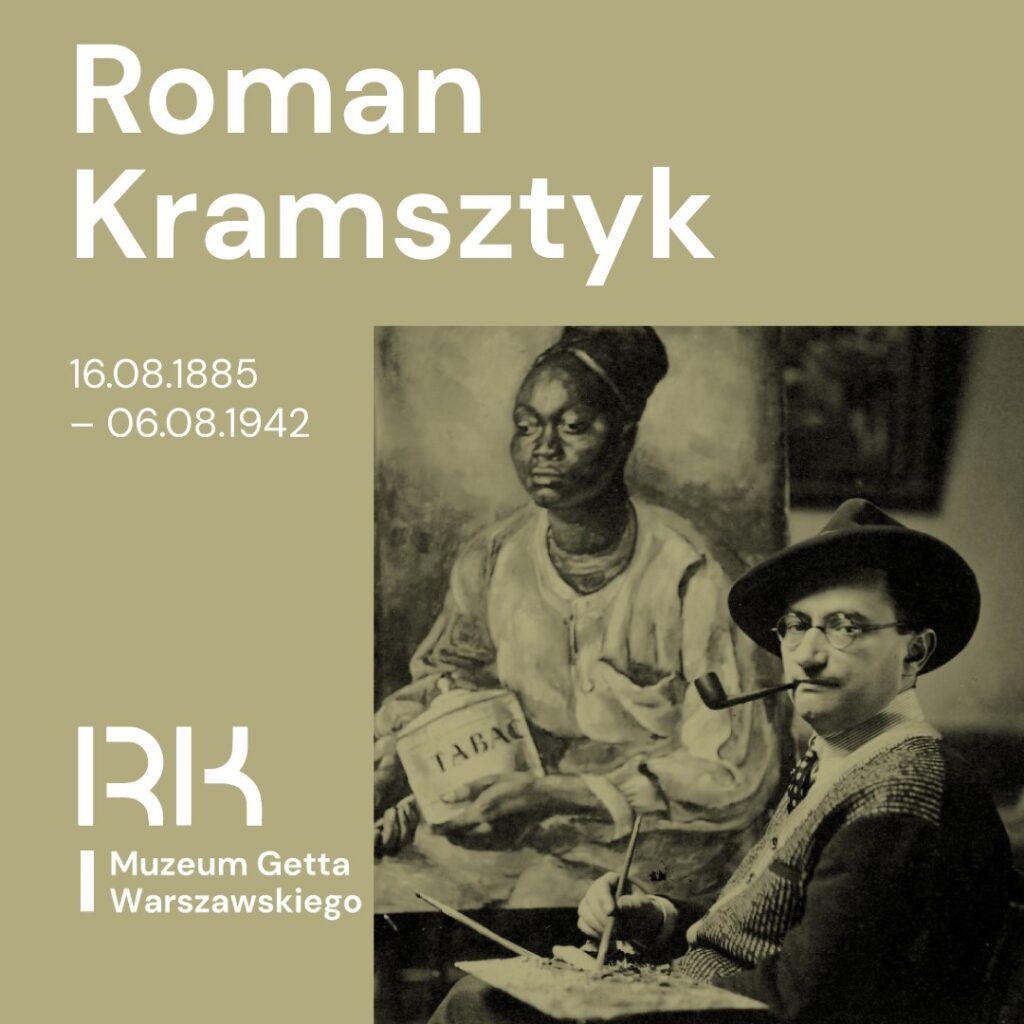Roman Kramsztyk (16.08.1885–06.08.1942)
painter, draftsman, member of the elite Group of Five

One of the most recognizable Polish artists in Poland and abroad was born on August 16, 1885 in Warsaw to an assimilated Jewish family. The son of Paulina, née Fajans, and the pediatrician and social activist Julian Kramsztyk, on his mother’s side he was the grandson of the photographer and lithographer Maksymilian Fajans, the brother of Maurycy, a well-known entrepreneur and one of the pioneers of industry in the Kingdom of Poland; on his father’s side, he was the grandson of the famous preacher, graduate of the Rabbinical School in Warsaw, Reform Rabbi Izaak Kramsztyk, who paid the price for his involvement in agitating for Polish independence during the January Uprising, among other things being imprisoned in the Citadel and deportated from the Kingdom of Poland.
Roman attended private drawing and painting lessons with Zofia Stankiewicz, Miłosz Kotarbiński and Adolf Edward Herstein in Warsaw, before studying at the Academy of Fine Arts in Krakow with Józef Mehoffer and from 1904 in the Drawing Class of Johann Caspar Herterich at the Royal Academy of Fine Arts in Munich .In 1910 he moved to Paris, where he finally settled in 1922. Despite his distance, he remained active in his homeland. In 1918, together with Eugeniusz Zak and Tadeusz Pruszkowski, he founded the so-called Nowa Grupa, he was one of the most active members of the Society of Polish Artists, and in 1922 he co-founded the Association of Polish Artists “Rytm”. Outside Poland, the places in which he exhibited included in Paris, Brussels, New York, Barcelona, Stockholm and Moscow.
Kramsztyk was a landscape painter, an author of nudes and still lifes inspired by ancient art, as well as a well-known and respected portraitist, who created a gallery of the Polish artistic and intellectual elite. Oil painting is the largest and most important part of his oeuvre, which can be included in the art circle of the École de Paris with which the artist was associated. Realism was closest to him, although not in a way that was either naturalistic or idealistic.
Every summer he came to Poland, where he ran an art studio. In 1939, he came to Warsaw for his mother’s funeral, where he was caught by the outbreak of the war due to prolonged inheritance procedures. Kramsztyk was a Catholic and always considered himself a Pole, but nevertheless in November 1940 he was interned and ended up in the ghetto, refusing the help offered by his friends and not attempting to escape. Although Judaism was alien to him as an artist, and Jewish themes were absent in his work prior to 1939, in the tragic conditions of the ghetto, he created drawings documenting the omnipresent horror, hunger and death of the Jewish inhabitants of the city. The fate of most of these works is unknown. They were probably burned.
He died on August 6, 1942 during the ‘Great Liquidation Action’ in the Warsaw Ghetto. Although he had a shelter in the bunker, he decided to leave it and go to his apartment to get his drawings. On the way back he was shot by the Germans. Apparently his last words were: “Tell them … to paint scenes from the ghetto. Sacrifice everything, let the world know about the bestiality of the Germans.” One of the artist’s most famous works from this period is “The Jewish Family in the Ghetto”, which miraculously survived in the Ringelblum Archive.
translated by Adam Grossman
